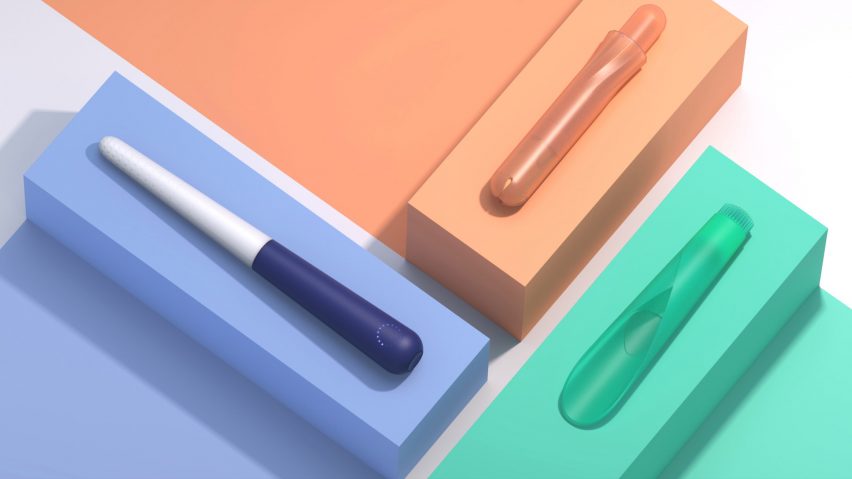Multidisciplinary design consultancy Matter has designed three conceptual cervical cancer examinations that women could carry out themselves at home to break the taboo of smear tests.
The project, titled Sukha, comprises three Human Papilloma Virus (HPV) home test concepts called Your Space, My Cycles and Our Bodies, which aim to make cervical cancer screening experiences more positive for women.
According to the Bath-based agency, in 2019 one in four women in the UK did not attend their cervical screening appointment, despite it being a "vital component" in the fight against cervical cancer.
The test involves a vaginal examination, known as a smear or PAP test, where a small sample of cells is collected from the cervix and tested for abnormalities.
This involves checking for a high-risk type of HPV – the name given to a common group of viruses that are passed on through any type of sexual contact – which is responsible for 99.7 per cent of all cervical cancers, as published on the NHS website.
By designing at-home tests, Matter hopes to tackle the taboos surrounding smear tests that prevent women from attending their screenings.
This could be anything from a lack of knowledge or lack of body confidence to a fear of feeling alienated from the "disconnected" screening process, the agency explained.
"The project grew out of a desire to initiate an internal studio project that could 'do good'," designer Emilie Robinson told Dezeen, "using design to build a positive future."
"With such a large proportion of women avoiding their screening, it seemed like a brilliant opportunity to design concepts that had potential to cut out the doctor's surgery and empower women in the process," she continued.
"We believe there is an opportunity to engage more women through familiarity, trust and empowerment, and aim to provide an approachable, accessible and holistic offering in women’s health and wellness."
The first concept test, Your Space, draws on the familiar design of existing period-care products like tampons and their applicators to offer an "intuitive" and compact sampling product.
The user would insert the applicator to collect the sample, just as they would a tampon. Once removed, the swab head sample would be stood upright and left to dry before the cap can be replaced, ready to be returned to a lab for testing.
The second My Cycles concept comprises a wand-like smart device and an accompanying smartphone app, which includes HPV screening alongside other testing services as part of a "life-long vaginal care regime".
This includes a menstruation and ovulation tracker, as well as STI and UTI testing. Interchangeable heads provide sample collection for a range of lab-supported and real-time diagnostic tests.
The narrow, dimpled head would be used for HPV testing – once inserted and rotated, the applicator can be removed and the head can be placed into the lab test tube and sent off for testing.
The alternative head and paper tabs can be used for urine tests, in a similar manner to a pregnancy test, to check for UTI's, pregnancy and vaginitis.
Feedback is provided digitally via the smart handle, which lets the user know if an accurate sample has been taken. It can also be connected to the app for a more in-depth analysis.
The third "tactile" test concept, called Our Bodies, is designed to allow women to "self-explore" as they use it.
A silicone applicator would be fitted over the user's finger, which could then be inserted into the cervix to collect a sample – assisted by a micro-bristled head.
The finger can then be removed and the silicone tab is pulled along the finger to invert the applicator to avoid contaminating the sample, before placing the applicator into the pot and sending it off to the lab.
Each of the Sukha tests are still in the concept phase, and have been developed with the help of medical professionals, including scientists from the Bristol Cytology Laboratory.
London-based architect Stiliyana Minkovska also aimed to make medical environments more comforting for women when designing her Ultima Thule project, which comprises a trio of undulating birthing chairs.
The chairs are designed to offer women a "sanctuary-like" environment during childbirth as an alternative to "hostile" hospital maternity wards.

